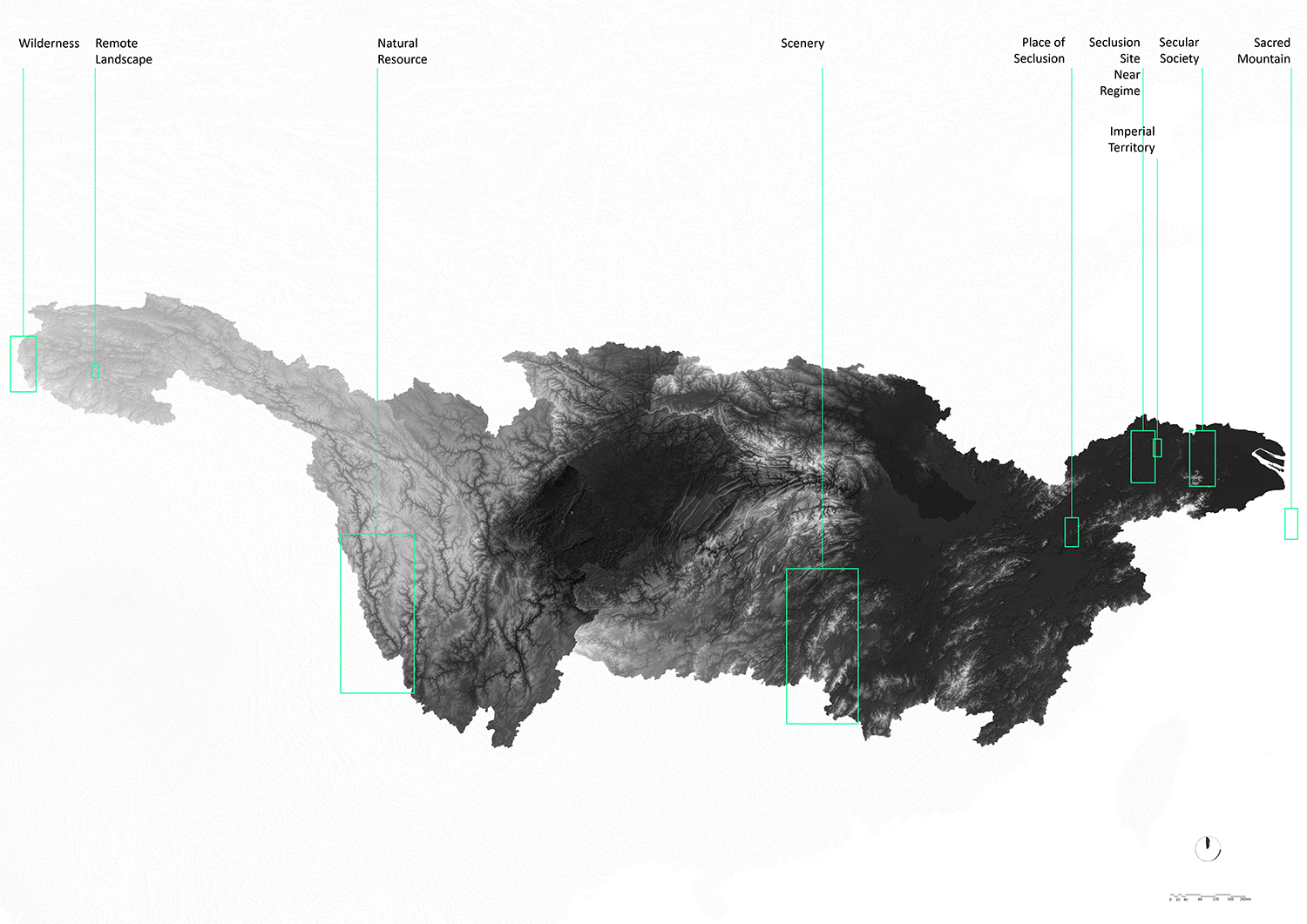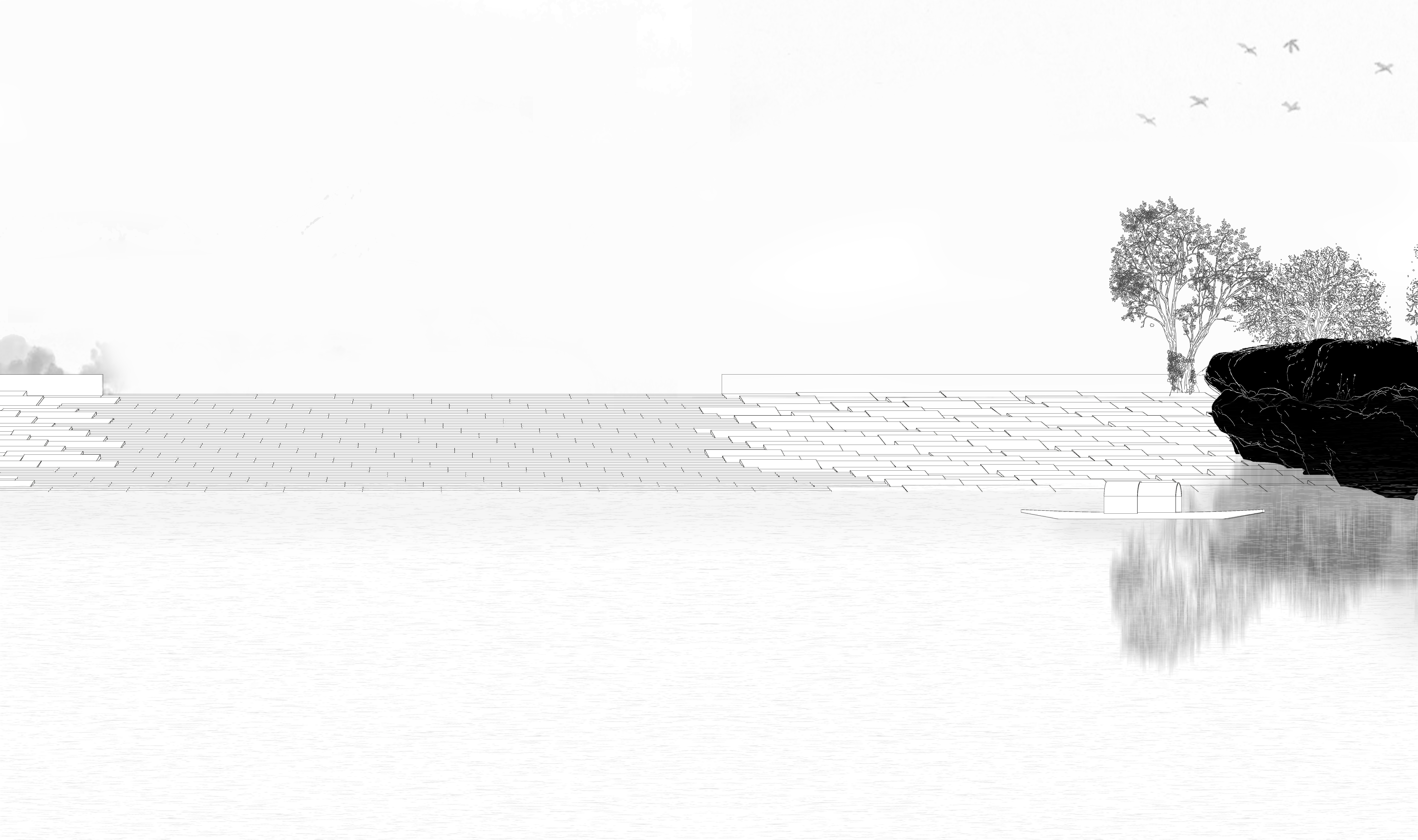Transient Landscape: Linguistics of Shanshui
山水之文
One and Many Rivers:
Yangtze River in Its Becoming
万千与一:想象中的山水
Flowing over 3915 miles, the Yangtze—across time and place— migrates from the Tanggula Mountains and merges into the estuary of the East China Sea. How could one decipher the most intimate but also the most abstract body of water, life, and memory?
Since the very beginning of Chinese culture, Chinese people have been practicing extending reality with words; for example, the words 山 ( shan, mountain) and 水 (shui, water) are abstractions of geographical features and cultural imaginations. By listing and configurating words inherited from Shan and Shui, we arrive at different microcosms that sensitively slice and interpret the civilization of the Yangtze River watershed.
Taking the Chinese linguistic mechanism—Shan and Shui—as a departure, this project examines complementary ways of knowledge making—from the canon of modern technology and information in hydrological station study to traditional and indigenous wisdom of phenology, bio indicators and time-space construction.
Water has become modern. Before the technological gaze that is cast on the water would eventually be cast back on us, the project hopes to unleash other forms of encounters between earth and water, human and non-human.
In the asymptote of approximating this “wet togetherness”, the project proposes a trailscape where they are constantly morphing and being morphed by the landscape. Here, the incremental graduation of the measure may be a rock along the trail, or the step that one takes along the way, or the height difference of Dongting Lake water comes and goes.
Collaboration with Hanyu Liu, 刘菡雨 in Prof. Elise Hunchunk and Prof. Marco Ferrari’s studio at GSAPP Columbia University



















